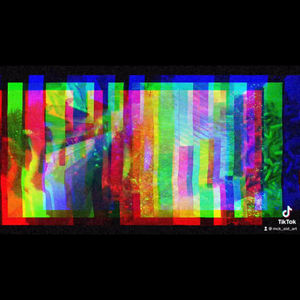
Visual Poetry
UNIVERSITY OF WARWICK ART HISTORY MODULE: VISUAL ART AND POETRY
This 3rd year module explored the relationship between art and poetry from the early-twentieth century to the present, examining collaborations between artists and poets, the work of artist-poets, and poets' reponses to the visual arts. The module also considered work that attempts to break down the boundary between the two kinds of art.
The syllabus involved
-
Modernism: Stein and Picasso
-
Modernism: William Carlos Williams and Visual Art
-
Frank O'Hara and Post-War New York
-
Assemblage
-
Poetry and Film in Post-War New York
-
Techology and the Hand-Made in Visual Poetry
-
Performance Art and Poetry: 0-9 and Street Works
-
Concrete Poetry
-
Conceptual Art/Conceptual Poetry
By the end of the module I was able to
-
Understand the theoretical and formal connections between the visual arts and poetry and the conceptual frameworks that unite them
-
Demonstrate detailed knowledge of the works studied and their contexts
-
Understand the relationship between different kinds of description and art objects.
POETRY STATEMENT
I created a visual poem, a found poem, and a film poem. The format of these comment on our obsession with social media; how it circulates, its accessibility, and the prevalence in our daily lives. Influenced by how the mimeographed publication 0-9 was independently printed and circulated in the late 1960’s, I set about creating three works that could be designed and easily distributed on social media platforms. The visual and found poems were constructed using a free website which social media managers recommend for designing posts, Canva. The found poem is in the style of an Instagram Infographic you swipe in order to read. For the film poem, I used Tiktok. Each piece features key concerns of communication, daily experience, and chance.
The visual poem, Improvisation 21.12.20, The Monopoly Deal, is a translation of an unscripted experience of playing a game with family into a poem, somewhat visually similar to a musical score. Influenced partly by John Cage’s visual art and use of chance, I recorded a segment of my day then developed the transcript into a poem that documents what the ‘performers’ said. I wanted to convey simultaneity and the polyphony of parts, with the liberation of words on the page communicating aspects like volume, intonation, rhythm and general chaos.
The found poem has taken sentences from the SAS essential guide to survival, a manual belonging to one of my brothers with a very serious narrative on staying alive. I appropriated phrases I found into a lighter narrative on how to survive the modern dating world. Like stereotypical perfume adverts designed ‘for him’ and ‘for her’, I designed the Instagram Infographic format with a particular agenda. Certain phrases seem bizarrely appropriate for the new setting, partly inspired by Hannah Weiner’s Code Poems and her appropriation of other text and signals. There is a tension between the banal and profound however, because the ‘for her’ part of the poem has more urgency and phrases implying the danger associated with men, whereas the counterpart is written as if with the intention of catching prey. This stays true to the nature of certain posts circulating Instagram now, with cautionary information and prominent cancel culture.
The film poem process used features of Canva and Tiktok to comment on the accessibility of making art and the circulation possibilities. Maya Deren’s anti-Hollywood view was particularly prominent here, having stated that a film can be made for less than the price of a lipstick in a Hollywood movie.* The amalgamation of my video clips from lockdown are designed to depict a simultaneous translation of experience. The linear shapes with different videos play on loop, denoting repetition of daily life and screening a rapid but fragmented view of reality. Each slit, like a pane of glass, invites the viewer to investigate a few seconds of that day. The song choice was circulating Tiktok earlier this year (2021) and the video effects serve to create an unusual viewing experience in an attempt to overcome the current banality and repetitious nature of daily life, where it seems only natural to turn to social media.
* Maya Deren, An Anagram of Ideas on Art, Form and Film, Yonkers NY: The Alicat Book Shop Press, 1946
John Wisemna, The SAS Survival Handbook, 1996
FOUND POEM
FILM POEM
EXTRAS AND FILM STILLS















